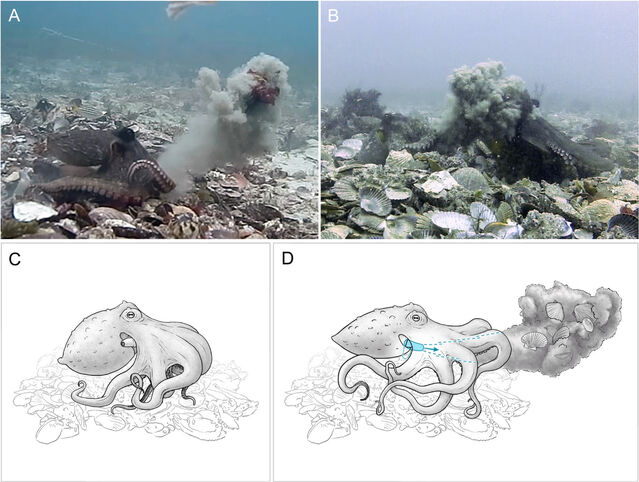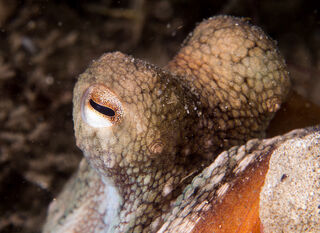Animal Behavior
8 Arms to Throw Things at You
Octopuses throw debris, sometimes seeming to target other octopuses.
Posted November 9, 2022 Reviewed by Gary Drevitch
Key points
- In a first, scientists recorded wild octopuses throwing silt and shells, often during aggressive interactions with other octopuses.
- Octopuses propel debris through the water by releasing the materials from their arms while creating a forceful jet of water from their siphon.
- Octopuses can be added to the list of animals who throw objects and may even be among the small group who direct their throws at other animals.

Octopuses are usually thought of as loners. But recent research suggests that some species show a variety of social behaviors when sharing space with others.
Now, researchers report a new behavior: throwing debris, sometimes at other octopuses.
The research was conducted in Jervis Bay, Australia, at a unique site where gloomy octopuses (Octopus tetricus) live in large numbers and often interact. David Scheel of Alaska Pacific University, Peter Godfrey-Smith of the University of Sydney, and colleagues used underwater video cameras to record the octopuses’ behavior. From 24 hours of footage across several days, the team identified 102 instances of debris throwing in a group of about 10 octopuses.
In this behavior, an octopus would gather material such as silt or shells in its arms, hold it in its arms and web, and then use a jet of water from its siphon (a tube-shaped structure that can eject water) to propel the material through the water.

“The throwing of objects that have been oriented by the thrower is a rare animal behavior,” says Scheel, who is also the author of the forthcoming (June 2023) book Many Things Under a Rock: The Mysteries of Octopuses. “Doing this under water, even for a short distance, seems especially unusual and quite hard to do, making this an even more striking behavior.”
Social Throws
Over half of all throws (53%) occurred during interactions with other octopuses; other throws occurred during den maintenance behaviors or after eating at the den.
The researchers say that some throws appeared to target other octopuses, based on several lines of evidence. First, throws in interactive contexts were more vigorous than others. And while shells were the most thrown items overall, octopuses tended to use silt more often when targeting other octopuses. In addition, octopuses displaying dark colors (generally associated with aggression) threw more forcefully and were more likely to hit another octopus.

Octopuses hit by thrown debris often changed their behavior by ducking or raising their arms in the direction of the thrower.
Scheel and colleagues say their observations suggest that at least in some social contexts, octopuses target their throws toward other individuals, though determining the intent of the animals remains difficult.
“Targeting, if indeed that’s what this is, perhaps suggests the octopus’s intentions and ability to anticipate both the trajectory and the effect of the thrown material,” says Scheel. “However, intentions are interior subjective states, and so challenging to establish objectively.”
Throwing items at other individuals in the same population is a rare behavior in nonhuman animals, previously seen only in some social mammals. Further investigations may reveal exactly what these octopuses are up to and why they seem to throw debris at each other.
References
Godfrey-Smith P, Scheel D, Chancellor S, Linquist S, Lawrence M (2022) In the line of fire: Debris throwing by wild octopuses. PLoS ONE 17(11): e0276482. Doi: 10.1371/journal.pone.0276482.


